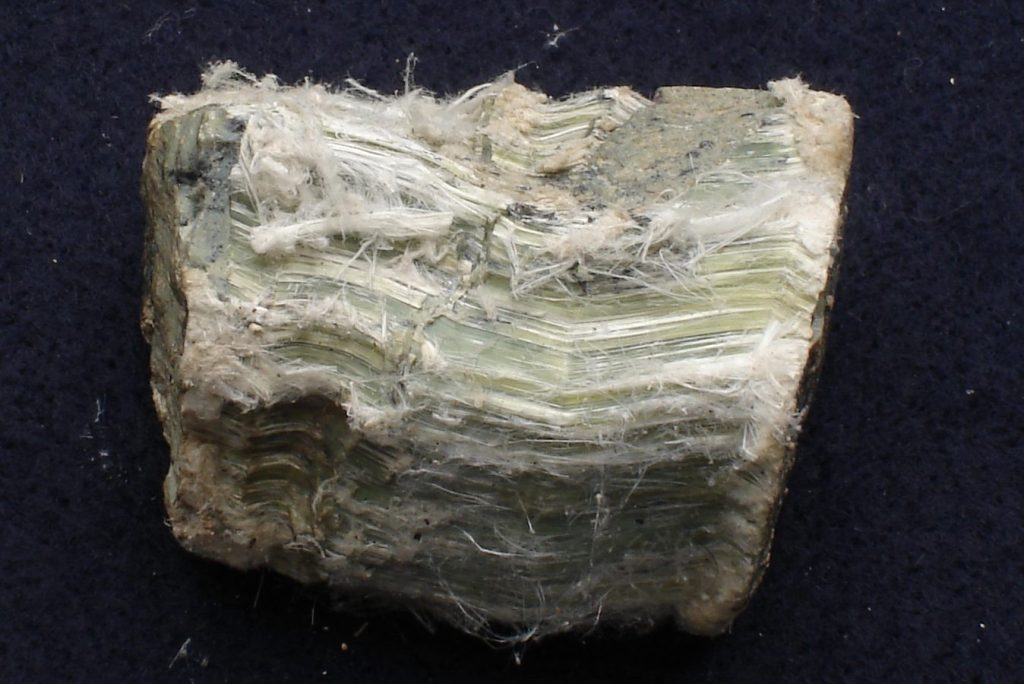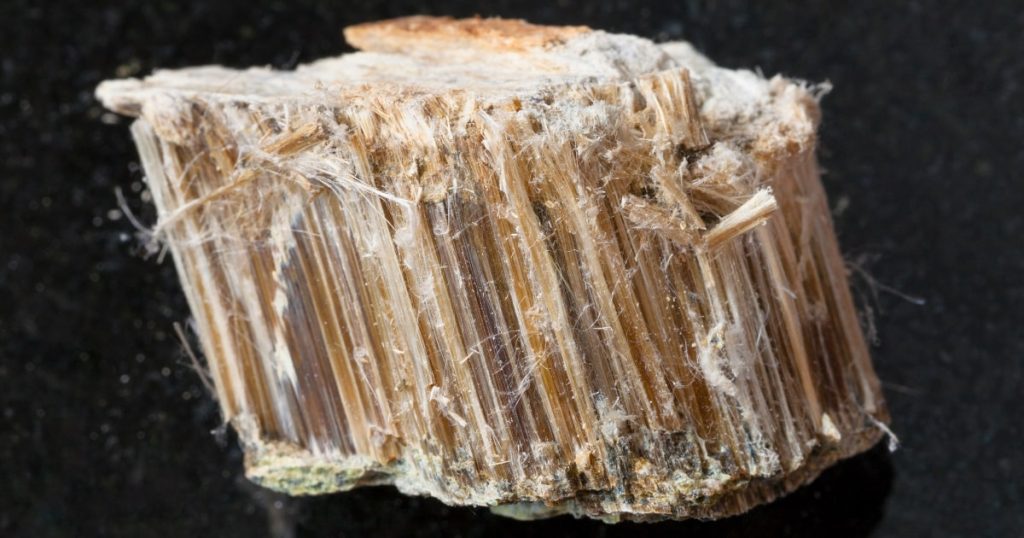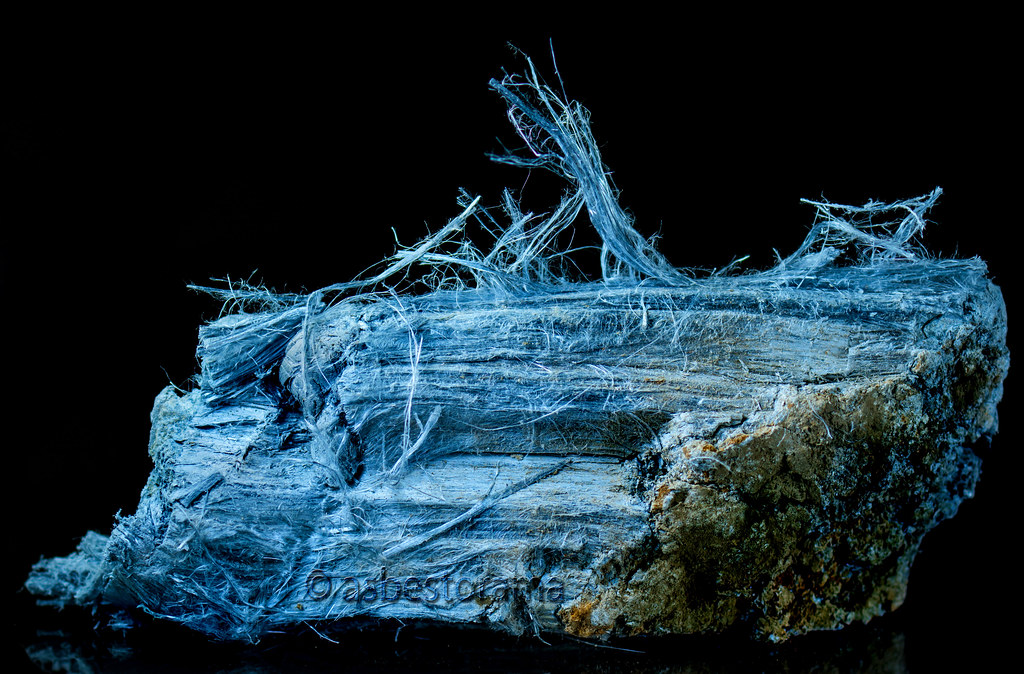1C. Types of Asbestos
Understanding the different types of asbestos is crucial for identifying potential exposure risks. There are six recognized forms, each with unique characteristics and uses. The industry has predominantly utilized three types due to their physical properties, but all six can pose significant health risks.
Chrysotile (White Asbestos)

- Properties: Has fine, flexible fibers and is more heat resistant compared to other types of asbestos. It is the most common form, accounting for about 90% of the world’s asbestos production.
- Uses: Found in roofs, ceilings, walls, and floors of homes and buildings. Also used in brake linings, pipe insulation, and boiler seals.
Amosite (Brown Asbestos)
- Properties: Known for its strong fibers, amosite is particularly resistant to heat and was widely used in construction materials.
- Uses: Common in cement sheets, pipe insulation, ceiling tiles, and thermal insulation products.

Crocidolite (Blue Asbestos)

- Properties: Has very thin fibers and is considered the most dangerous type of asbestos due to its easily inhalable size.
- Uses: Used in spray-on coatings, pipe insulation, and cement products but has been less common than chrysotile and amosite due to its known hazards.
Tremolite, Anthophyllite, and Actinolite
- These less commonly used types vary in color from white to dark brown and were not typically used as extensively in commercial products. However, they can be found as contaminants in chrysotile asbestos, vermiculite deposits, and talc powders.
- Uses: While not used as predominantly in commercial applications, they can still be present in insulation products, sealants, and sometimes in consumer goods like talcum powder.
Most Common Types in Industry
- Chrysotile, amosite, and crocidolite are the most industrially significant types of asbestos. Their varied applications across construction, manufacturing, and industrial sectors highlight the widespread reliance on these materials before their health risks were fully acknowledged.
Visual Identification of Asbestos Fibers
- Visual aids, such as microphotographs, can be instrumental in identifying different types of asbestos fibers. These aids often depict the unique physical characteristics of each type, such as the curly nature of chrysotile fibers compared to the straighter fibers of amosite and crocidolite.
- It’s important to note, however, that accurate identification of asbestos type often requires laboratory analysis, as the fibers are too small to be identified by the naked eye.
Understanding these types and their uses helps in assessing potential exposure risks and is essential for effective asbestos management and remediation efforts. Despite the ban on asbestos in many countries, its legacy persists in existing structures, underscoring the need for ongoing vigilance and safety measures.
